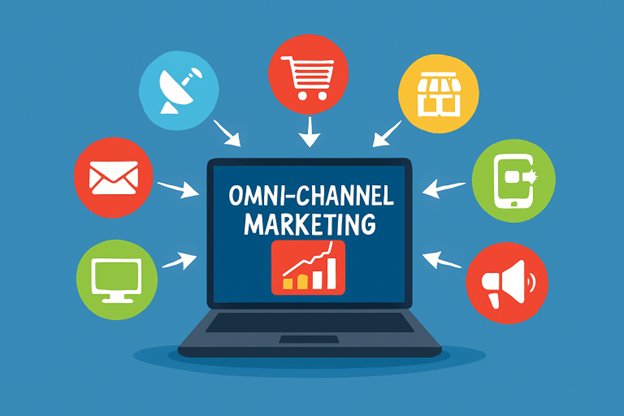Omnichannel Marketing in India: Where Screens Meet Streets
Walk through Mumbai’s chaotic markets, then scroll through Bengaluru’s app-laden streets. India’s retail scene no longer fits neatly into online or offline boxes. By 2026, e-commerce is expected to hit $163 billion, propelled by over 800 million smartphone users and a generation that treats notifications as second nature. At the center of this retail choreography lies omnichannel marketing. This is less a strategy than a performance, where the customer moves effortlessly across platforms without ever tripping over friction.

How is Multichannel a Unified Experience?
Omnichannel marketing asks a deceptively simple question—why treat the website, app, store, and even voice assistants as separate worlds when shoppers live in all of them simultaneously? Unlike multichannel approaches, where an online purchase might as well be a different universe from in-store stock, omnichannel stitches these experiences into a single thread. A shopper might explore outfits on a phone, examine them in a mall and pay via UPI without ever losing continuity.
The engine behind this magic is data.
CRMs and AI track behavior across platforms, delivering personalized touches at just the right moment. Metrics reflect the payoff—retention jumps to 91% for omnichannel users versus 67% elsewhere, while revenue can surge 30%. All of this, in a sense, is empathy rendered in algorithms.
The Indian Context
India blends digital acceleration with entrenched physical habits.
Urban quick commerce is projected to reach $5 billion by 2025, while rural regions climb online via affordable data plans. Pandemic habits persist, with 60% of shoppers favoring hybrid engagement.
From geo-targeted notifications to loyalty programs spanning apps and stores, brands weave physical and digital into “phygital” solutions. WhatsApp, with over 500 million Indian users, serves as both storefront and concierge, while AI chatbots handle multilingual queries. Inventory synchronizes across platforms, reducing the notorious 70% cart abandonment rate and unlocking the nation’s projected $1 trillion retail potential.
Examples of Seamless Shopping
There are blistering examples of omnichannel marketing in India, with some of them mentioned below:
- Tata Cliq turned online browsing into a phygital affair: browse on an app, schedule virtual styling, pick up in-store, and return at any partner outlet.
- BigBasket blends AI-driven personalization with hyper-local express deliveries, nudging routine grocery shopping into a frictionless habit.
- Reliance Retail’s JioMart orchestrates chat-based shopping, stock reservations, and loyalty point crossovers, turning scale into convenience. Ajio, meanwhile, lets trend-savvy Gen-Zers try AR filters or shop-in-shop setups, letting online inspiration spill into physical touchpoints effortlessly.
Conclusion
Omnichannel in India is no experiment. It is survival, artistry, and storytelling all at once. For retailers, the choice is stark: make every channel feel like home or risk watching customers wander elsewhere. And in a country of 1.4 billion shoppers, those who master the art of seamless transitions may very well write the next chapter in Indian retail.







